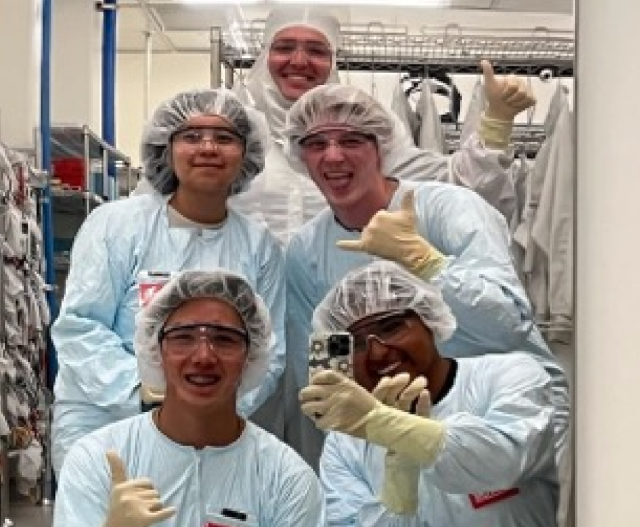Advisor
Dr. Steven P. Denbaars - Materials & Electrical Engineering
Mentor
Alejandro Quevedo - Electrical Engineering
The World of Light – Engineering High Efficiency Solid State Lighting
Interns
Parker Johnston - Electrical Engineering
Sean Horan - Computer Engineering
Emily Corrales - Biology
Jenisa Medina - Statistics & Data Science

Project Description
Light-emitting diodes (LEDs) illuminate the streets and buildings of the modern world. Ideally, white-light LEDs are a combination of red, green, and blue LEDs, however, only blue diodes are highly efficient; green and red diodes operate at less than 60% efficiency and thus utilize much more energy. To address this issue, the layered structure of a green LED was optimized to improve light efficiency and output. First, one control and two experimental sample LEDs were created through crystal growth and fabrication. In one sample, “negatively doped” layers, which contained more electrons, were added in between the light-emitting layers in the crystal. In another sample, the number of light-emitting layers was reduced compared to the control. Using a probe station, measurements of the current, voltage, and light output were performed on each LED sample. Results reveal that the sample with negatively doped layers had significantly better voltage but worse power at any current relative to the other samples. The sample with fewer light-emitting layers had a significant improvement in both voltage and light output. Reducing the amount of light-emitting layers increases efficiency by 12%. Future research will utilize the improved green LED as a reference for uncovering new variables so the ideal light source of mixed color LEDs can one day become a reality.
